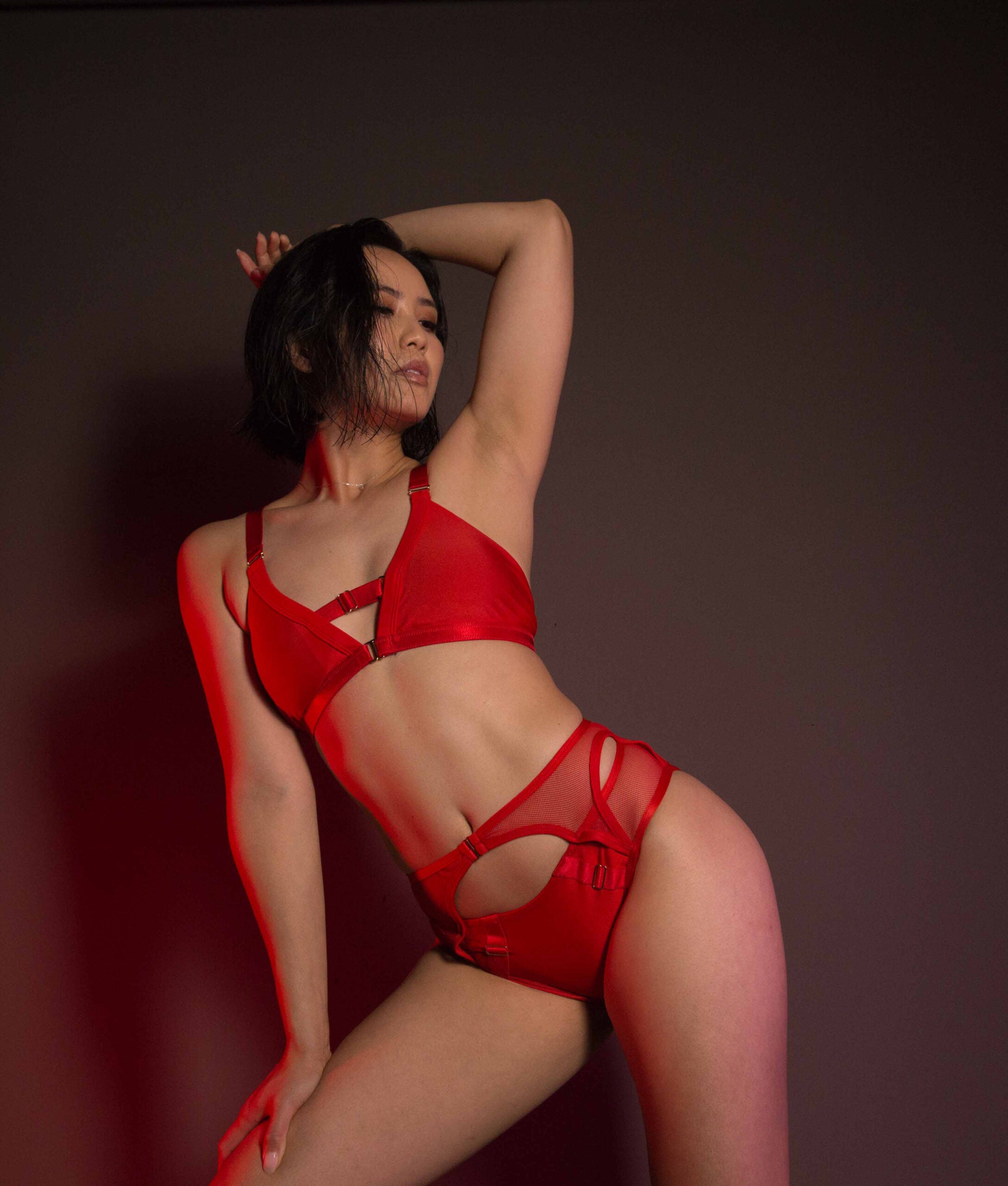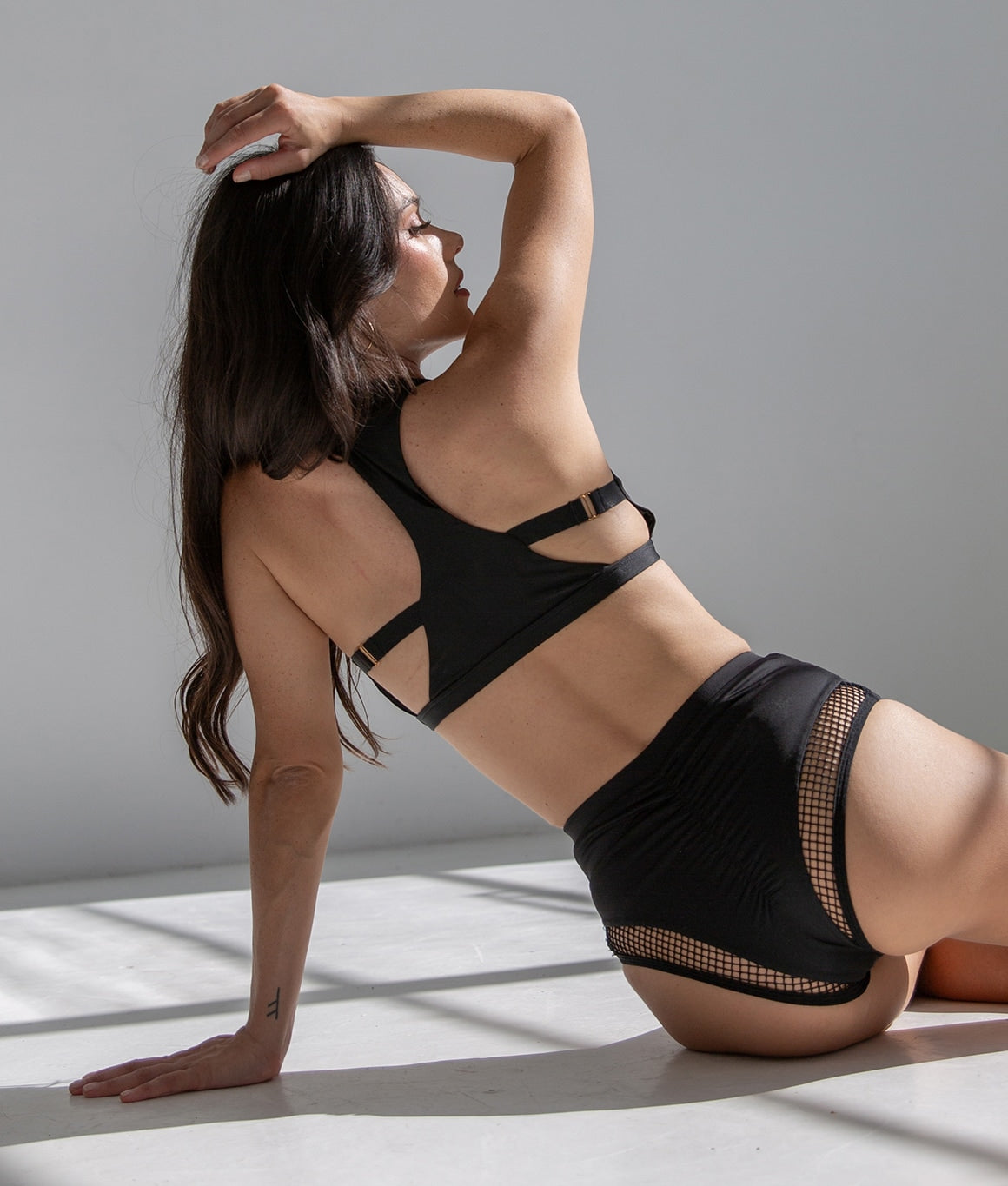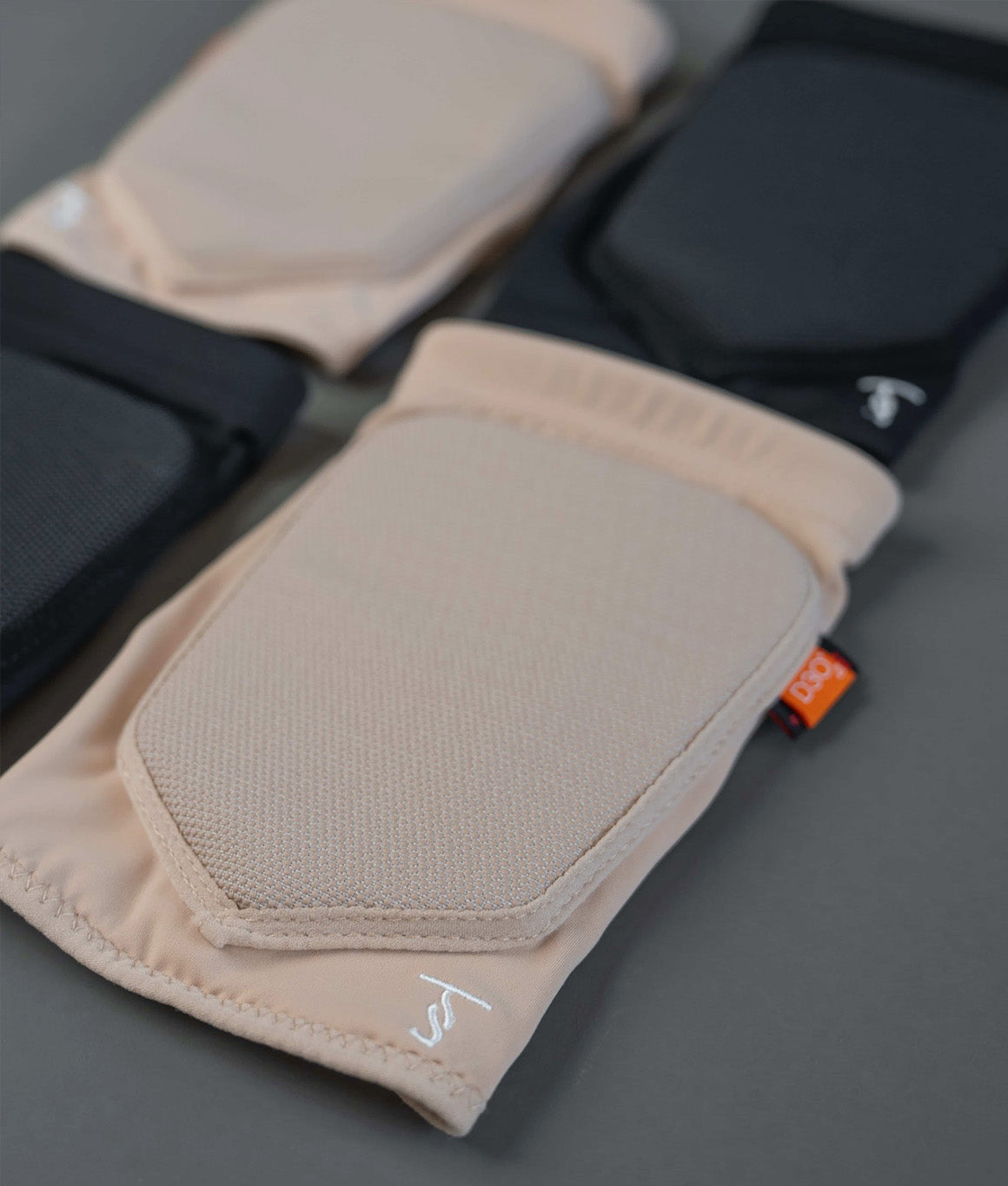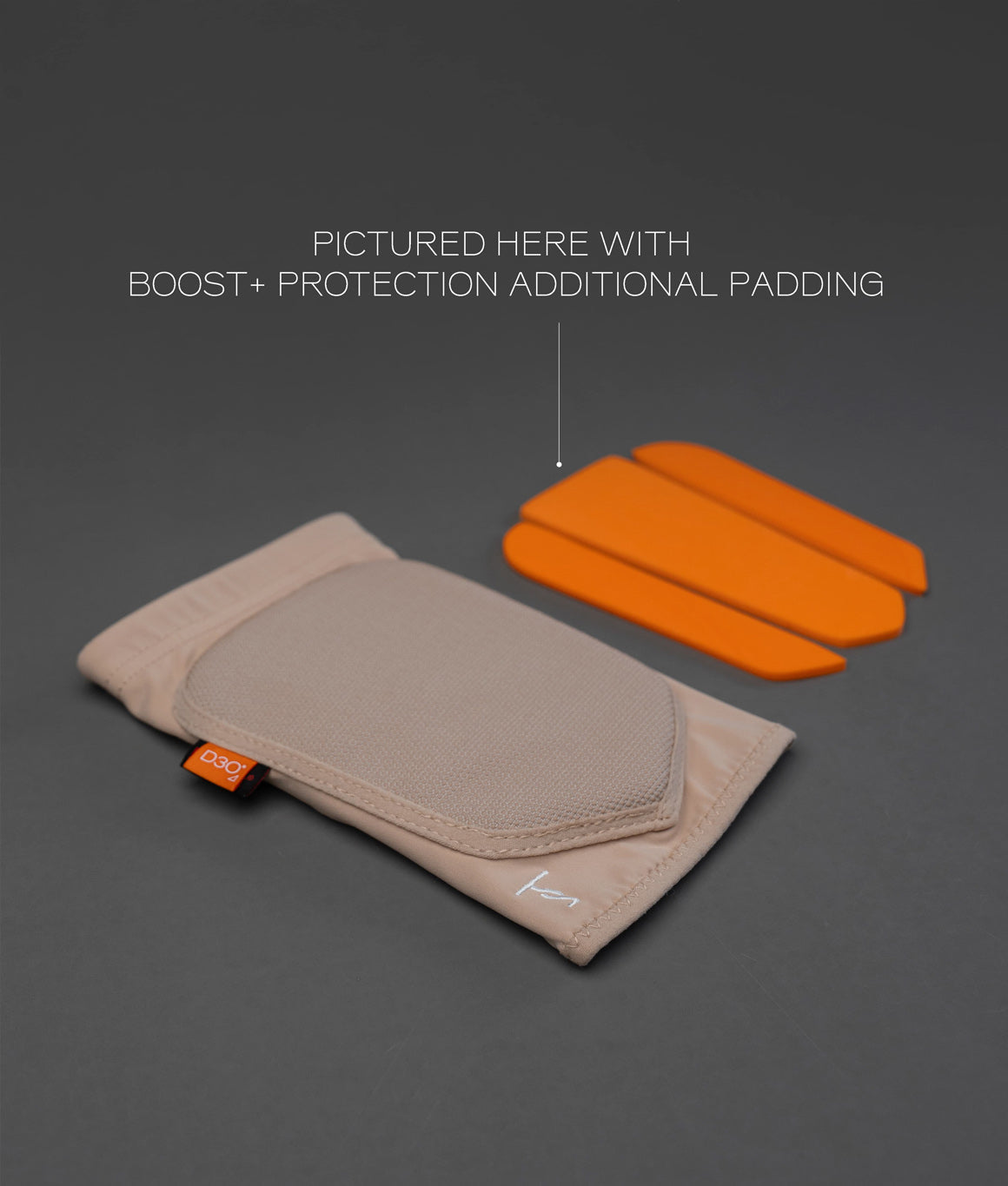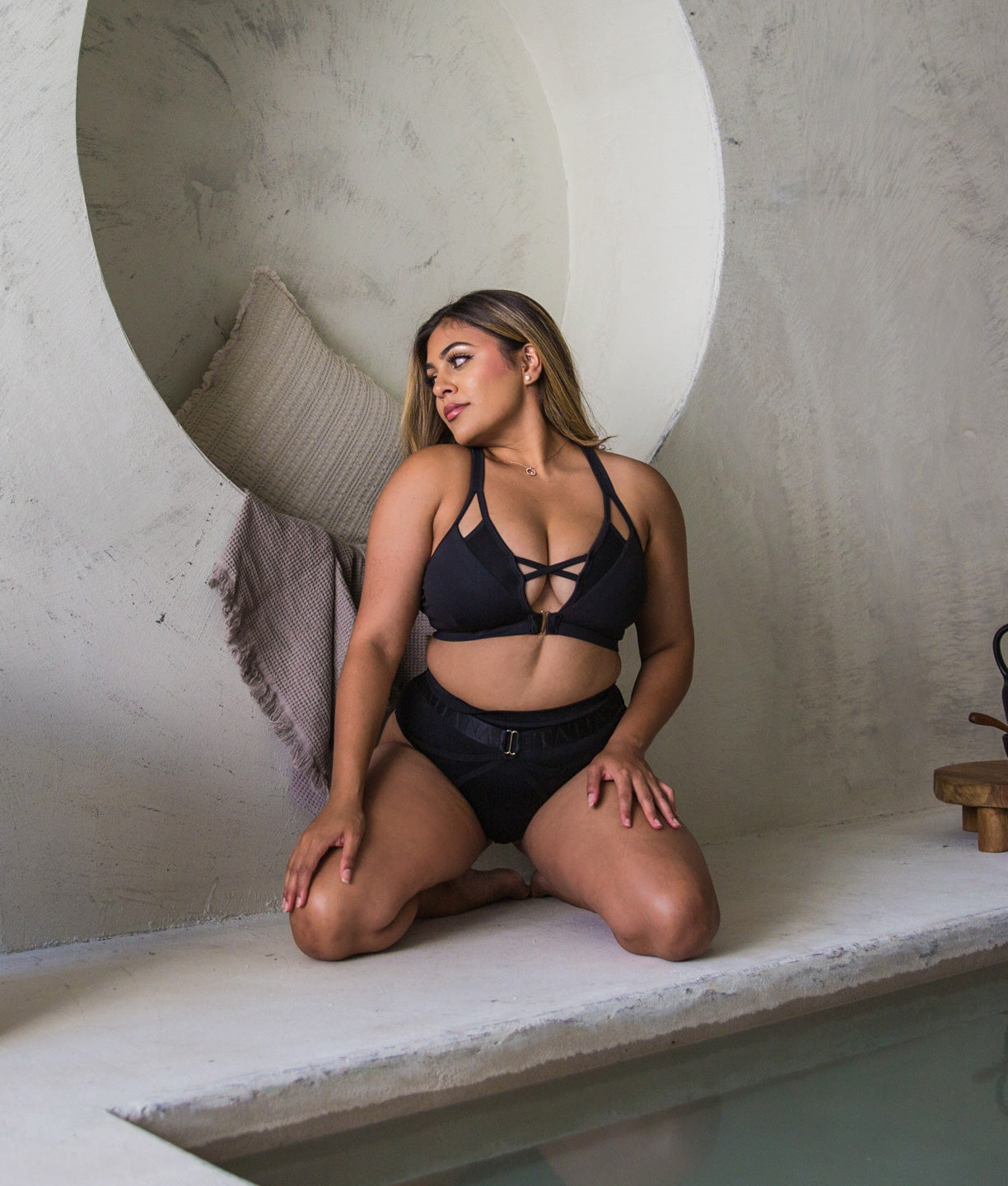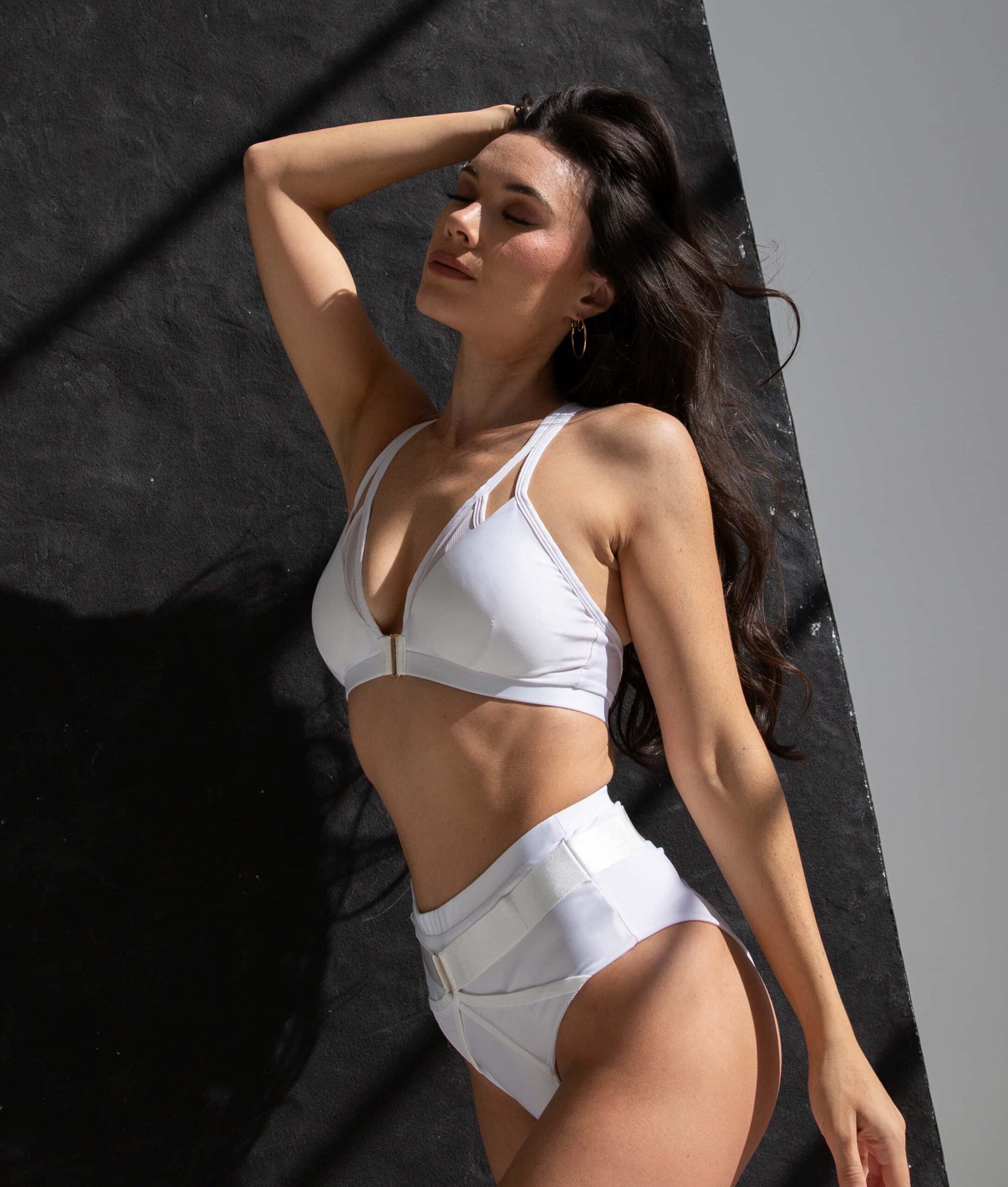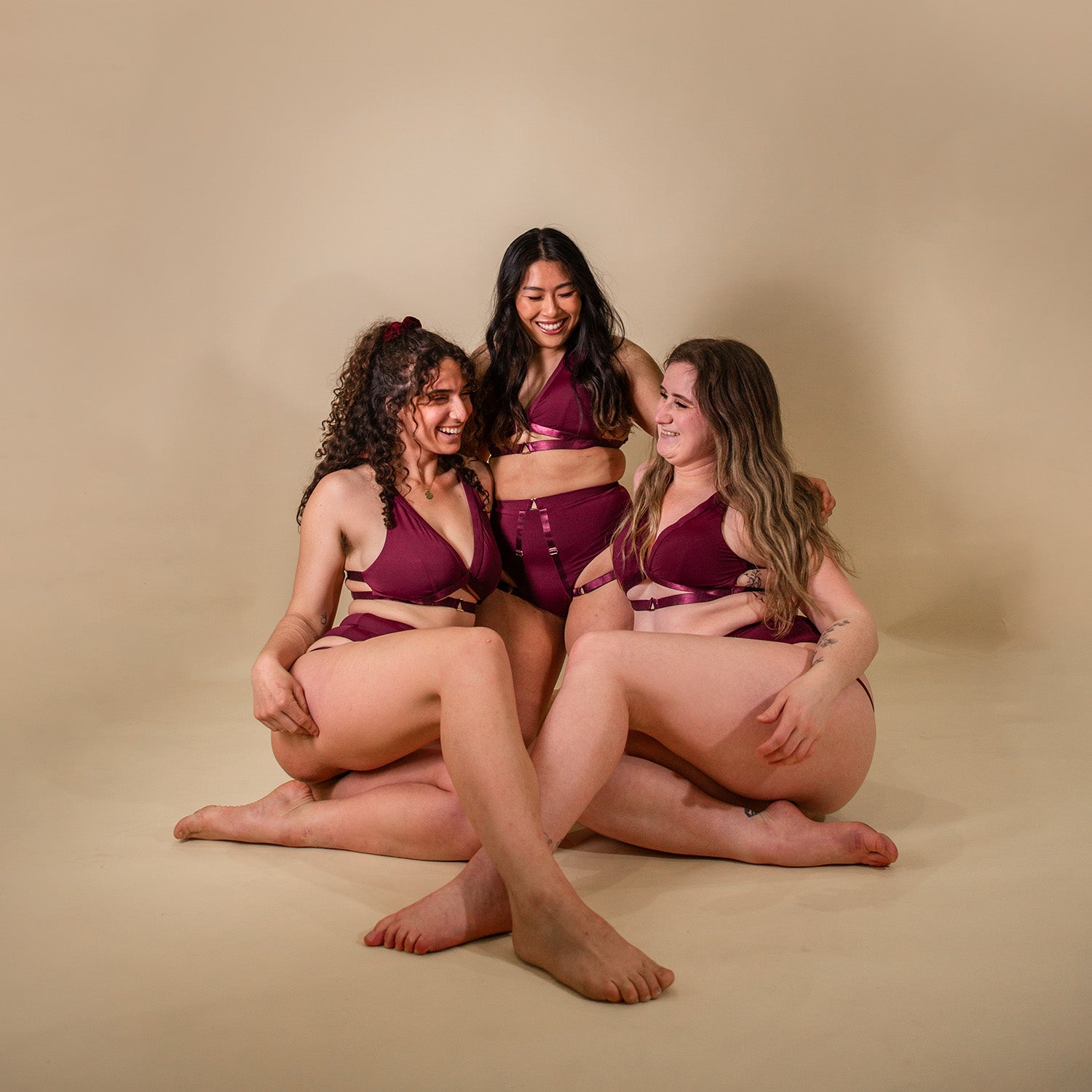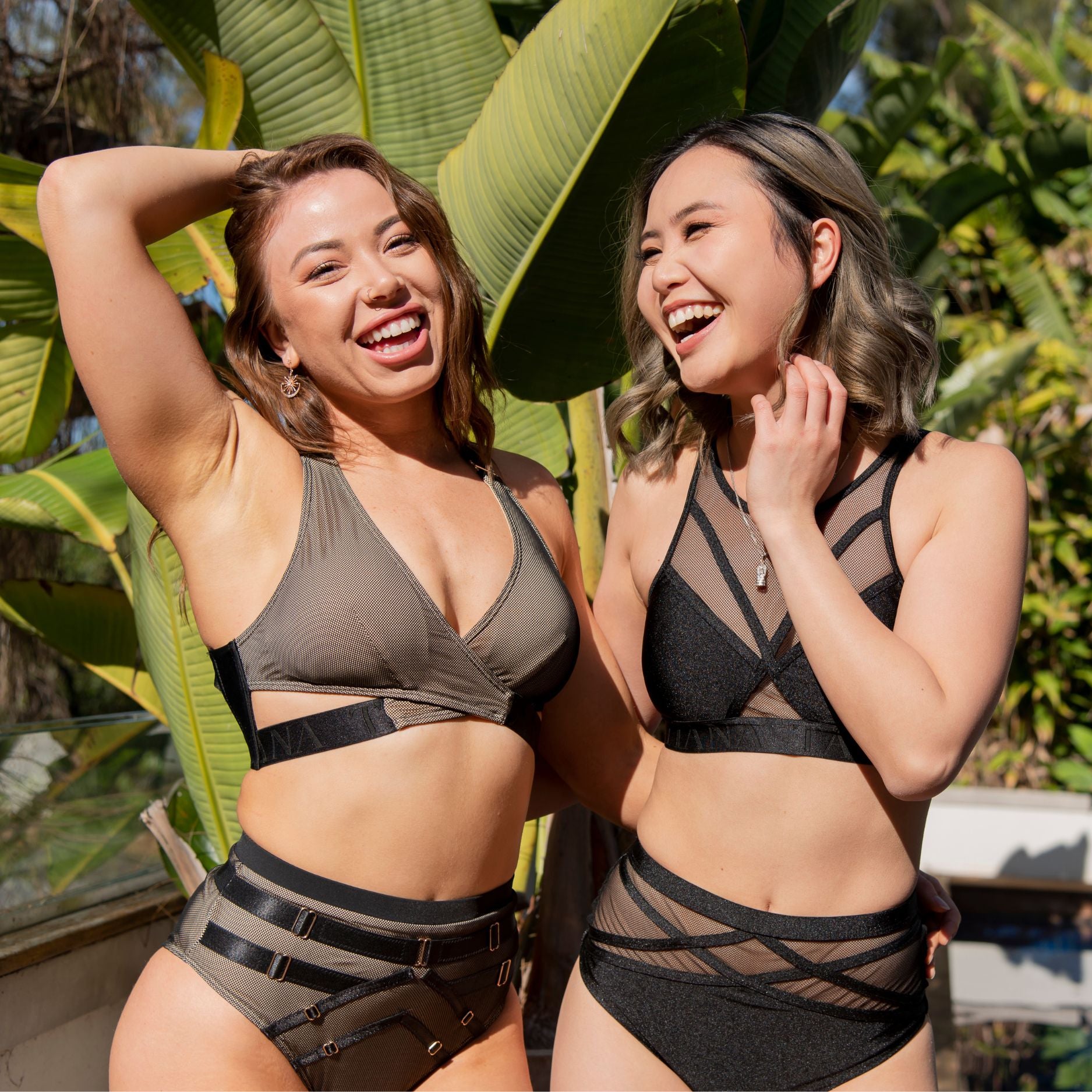Ultimate Dance Knee Pads
Sizing & FAQs
All the extra information you'd need about our knee pads.
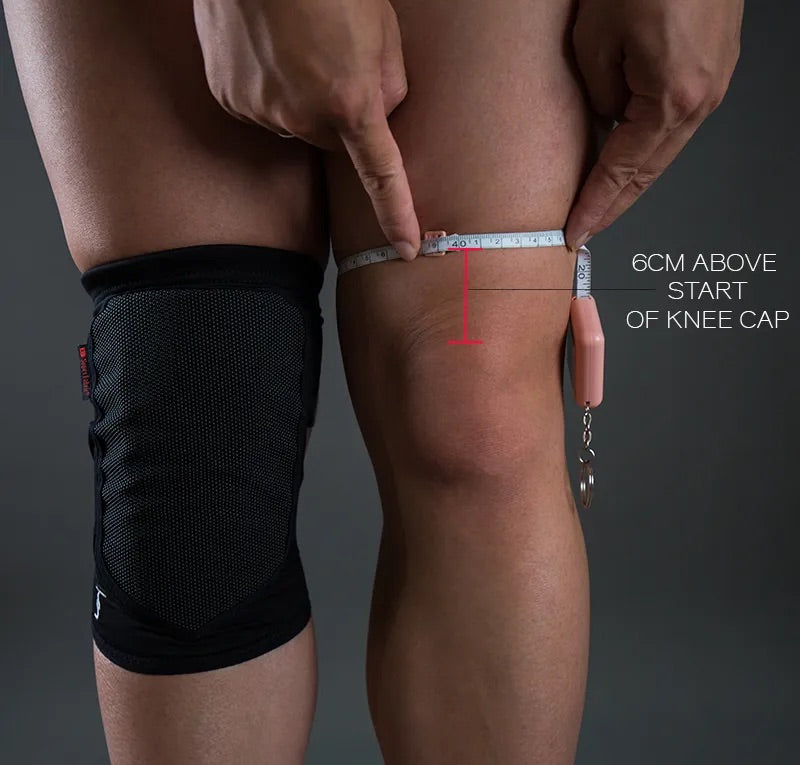
HOW TO CHOOSE YOUR SIZE
DANCE KNEE PAD SIZING
Everyone is generally able to fit into two sizes due to the fabric we have chosen.
- Firstly, measure 6cm above your knee cap and then wrap the tape measurement around your lower thigh to work out your ‘lower thigh circumference’
- Match with our size chart below to find your perfect size
| SIZE |
LOWER THIGH CIRCUMFERENCE (CM) |
LOWER THIGH CIRCUMFERENCE (INCHES) |
| XS | 34 – 39 | 13.4 – 15.3 |
| S | 40 – 45 | 15.7 – 17.7 |
| M | 46 – 51 | 18.1 – 20.1 |
| L | 52 – 57 | 20.5 – 22.4 |
We've got you
Ultimate Dance Knee Pad FAQs
The answers to all your burning questions.
As a dancer myself, my dancing has evolved over the years. It started out as floor work with just my knee sliding on the floor. A few years in, I started exploring the world of drops, flips and kips to add a dynamic, entertaining and challenging element to the way I danced.
This meant my drug store bought knee sleeves or volleyball knee pads no longer served a purpose. They were great for sliding and only sliding. I was left with bruises that took weeks to fade/heal if I tried to practice my kips in those one pads. And realistically, you don’t get your desired kip within one attempt. It takes repetition and perfection.
I was 29 when I started exploring this space and could not afford to keep walking around with bruised knees and worse yet, not knowing what was happening under my knee cap after each kip. I just knew it couldn’t be good.
Just because you can’t ‘see’ impact, doesn’t mean it’s not there. It’s a silent killer that will make it’s appearance over time in the form of knee injuries, bursitis and knee pain. This is NOT worth that perfect kip.
And so, the knee pads were designed with YOU and your passion in mind. To be dynamic, entertaining and challenged, we want to equip you with a tool to aid your learning.
Impact protection means that the padding contains technical properties that absorb the landing of your kips as opposed to your knees. This is not a characteristic you can find in knee pads that use EVA foam or gel padding and this is what makes our knee pad so special.
As dancers, we generally dance on floorboards. Floorboards are made up of individual panels placed together. Whilst the floor generally appears seamless, the joining sections have a small gap. This is where fabric of your knee pad generally gets caught. Over time, these ‘caught’ sections turn into small tears on your knee pad sleeve and so forth.
Our carefully selection abrasion resistant fabric (SuperFabric®) is engineered in the USA to withstand cuts. Their technology has been applied to soldier uniforms and shoes, firefighter gear, industrial workwear, skating shoes and hiking gear as their applications/uses are subject to rough wear and tear.
By applying this technology to our knee pads, we are confident the surface of your knee pad sleeve should almost *never* tear. This means less replacements for you and more money in your pocket!
*We have been putting our SuperFabric to the test for the past 3 years and have not experienced any tears on the front surface of the knee pad.
As a bit of background, impact protection is subject to a finite number of ‘impact’ before the protective gear renders it’s protective abilities.
Take a skiing helmet as an example, upon impact (a bad crash on the mountain where you hit your head), the helmet must be replaced immediately to ensure it’s protective qualities are not compromised should this accident happen again.
Similarly to our D3O® padding, we have been advised that whilst the impact protection is not easily diminished in the same way s a skiing helmet, you need to consider the amount of impact you subject the padding to.
Below are a few scenarios where you should consider replacing the padding:
- If you consistently train kips, flips and drops, you may want to consider replacing the padding when you feel that the padding is no longer absorbing the impact. We will be offering replacement padding for sale towards September 2024.
- If the padding has started to crumble
- If you have been washing the padding regularly (tsk tsk) and you begin seeing physical changes in the padding e.g. crumbling, snapping etc
As an additional guide*:
- If you are a full time instructor or professional pole athlete who trains high impact kips 20-30 hours a week, you should monitor the effectiveness of the impact absorption at the 12 month mark (or earlier) and determine if a replacement is necessary
- If you are an intermediate student who attends classes 2-4 times a week and is using the knee pads for a mix of flips and floorwork, you should monitor the effectiveness of the impact absorption at the 20 month mark (or earlier) and determine if a replacement is necessary.
- If you are a floorwork only student who attends classes 1-2 times a week, your knee pad may only need to be replaced every 2-4 years. We advise you to monitor the effectiveness of the impact absorption at the 30 month year mark (or earlier) and determine if a replacement is necessary
**These recommendations are only a guide and it is up to you to listen to your body to determine whether the level of impact protection has diminished and requires replacing. If in doubt, reach out to us or just opt to replace. This guide has been put together by feedback from customers and professional pole athletes that we work with.
The average lifespan of a standard EVA padding or foam is about 6 months with usage of up to 4 hours of dance/floorwork per week. After this time frame, users generally experience deflating and thereby causing knee pain as the barrier between your knee and the floor is minimised/less cushioned.
Our D3O® padding is expected to last 4 times* as much (if not longer) provided the padding is well taken care of. This means well ventilation after every use, no washing and storage in a cool dry area.
Just with any protective sporting gear on the market (like helmets), the amount of impact the padding can absorb is finite. When you feel that the padding is no longer absorbing the impact, it would be time for a replacement. We are now offering the replacement padding for sale here.
As a guide**:
- If you are a full time instructor or professional pole athlete who trains high impact kips 20-30 hours a week, you should monitor the effectiveness of the impact absorption at the 12 month mark (or earlier) and determine if a replacement is necessary
- If you are an intermediate student who attends classes 2-4 times a week and is using the knee pads for a mix of flips and floorwork, you should monitor the effectiveness of the impact absorption at the 20 month mark (or earlier) and determine if a replacement is necessary.
- If you are a floorwork only student who attends classes 1-2 times a week, your knee pad may only need to be replaced every 2-4 years. We advise you to monitor the effectiveness of the impact absorption at the 2 year mark (or earlier) and determine if a replacement is necessary
*We are hesitant to claim any longer beyond 4x times as we are constantly monitoring the longevity of our very first samples with our designated durability tester.
**These recommendations are only a guide and it is up to you to listen to your body to determine whether the level of impact protection has diminished and requires replacing. If in doubt, reach out to us or just opt to replace. This guide has been put together by feedback from customers and professional pole athletes that we work with.
Yes, we are now offering the Replacement Stock Padding. Check it out here.
Explainer video here from Tatiana.
I just wanted to share a little about my decision release the latte variation first and I hope you can see where I'm coming from. As a small business, our funds are limited and so, releasing even just one new colour is a significant financial investment.
It was a really tough decision to make as inclusivity is at our core brand values (all our loyal customers have witnessed this this). My intention/dream is to eventually release a variety of colours to suit various complexions and I hope you know that I genuinely mean that.
There are quite hefty minimum orders of custom coloured fabric that we need to meet with 2x key suppliers (1 - the knee pad sleeve and 2 - the SuperFabric) when we release new colours. If minimums are not met, the production is just not viable for our suppliers.
At this stage, we need more demand warrant additional colours otherwise, we would go out of business :( So please look our for our polls on insta or send us an email/DM so we know you're after different shades!
Our knee pads require a total of 6x suppliers for various components. Each component has been carefully selected and have minimums that must be met by individual suppliers. If minimums cannot be met, a higher price is generally paid for a smaller quantity. As a small business who does not mass produce, we must absorb/accept this cost particularly as due to our niche industry.
The latte coloured knee pads are priced at $138.00 AUD. The pricing difference from the black knee pads is due to the colour customisation for the main nylon elastane fabric as well as the SuperFabric®.
We have a very small team and are consistently using funds to invest in R&D to continually improve the knee pads. There will never be a final version as we know there’s always better out there. Stay with us and believe in us!
As with any technical sporting good, it's important to understand how to take care of your knee pads to preserve the technical capabilities. Always ventilate after every use and always remove the padding inserts before washing the sleeve.
It is crucial to draw moisture/sweat out of the knee pad as often as possible to preserve the impact protection and structural integrity of the knee pads and to minimise the padding from disintegrating.
These instructions apply to the stock D3O® padding as well as the Boost+ Protection:
1. Sprinkle baking soda all over the padding as this will absorb any odours.
2. Let it bake (with the baking soda) in direct sunlight for 1-3 hours as this will allow the knee pad to dry from the sweat accumulated. Do not leave out for more than 3 hours.
3. Wipe baking soda clean using a damp cloth
D3O® offer various levels of material and protective combinations. Upon testing numerous variations, we believe the original padding is the most comfortable padding for usage as a dancer however, comfort/softness comes at a compromise of slightly lower impact protection that a material that is harder.
This is where the Boost+ Protection comes into play. It is a thinner, harder and plastic like padding that is able to absorb a higher level of impact than our original padding. Using these two together yields a dream combination of comfort and protection.
Not everyone requires this level of protection (e.g. if you only do floor work, you may prefer our knee pads for the durable SuperFabric® cover as opposed to the impact protection) and so you can opt for a lower level of impact protection with the original stock padding.
The Boost+ Protection padding thinner, harder and plastic like feel. Whilst it can absorb more impact, it is rather uncomfortable when worn as a knee pad as it is quite stiff particularly when you are in a kneeling position or if you are doing floorwork.
This is definitely something we are working on however, we're not quite happy with the current options that we have available on the market as the quality not up to our standards.
We find that grippy fabric that is usually glued to the main fabric tends to wear away quite quickly or fall off completely. And so, we are continually searching for the right fabric.
If you want to find out the size of your existing Tatiana Active Knee Pads, but the size tag has faded, measure along the top of the knee pad and check against measurements below:
| Size | Measurement along top laying flat (CM) | Measurement along top laying flat (INCHES) |
| XS | 13.25cm | 5.2" |
| S | 15.25cm | 6" |
| M | 16.75cm | 6.6" |
| L | 19.25cm | 7.6" |
